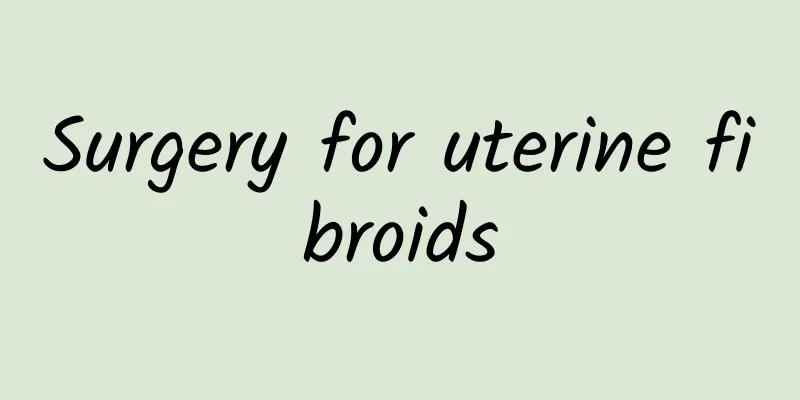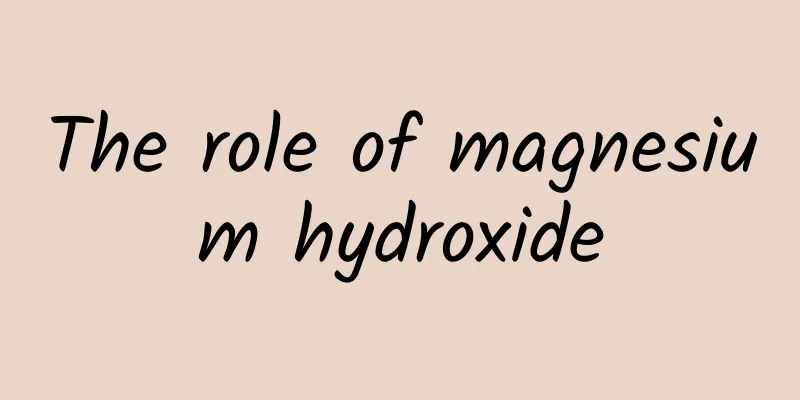Surgery for uterine fibroids

|
Uterine fibroids are one of the most common gynecological diseases among women. If you suffer from uterine fibroids, your uterus will suffer severe trauma. If not treated in time, it is likely to affect your future pregnancy. Uterine fibroids need to be removed surgically. Uterine fibroids with different symptoms require different surgical plans for treatment, and the final treatment effects are not exactly the same. So, what are the surgeries for uterine fibroids? 1. Myomectomy Myomectomy: There are open myomectomy and minimally invasive (hysteroscopic) myomectomy. For example, a laparoscope is an instrument with a tiny camera attached. Laparoscopic surgery means: using a cold light source to provide lighting, inserting a laparoscope lens (3 to 10 mm in diameter) into the abdominal cavity, and allowing the operating doctor to observe the patient's abdominal cavity situation on a dedicated monitor through the lens, analyze and judge the patient's condition, and use special laparoscopic instruments to perform surgery. Advantages: The uterus is preserved, but there is a greater disturbance to the pelvic cavity, fertility is affected after surgery, and the recurrence rate is high. The reasons may be: (1) Some tiny myomas cannot be detected by B-ultrasound before surgery or are difficult to detect by naked eye or touch during surgery and are left behind. They grow larger under the action of sex hormones after surgery, especially the extremely tiny myomas between the muscle walls. This has been confirmed by research data; (2) The more fibroids a patient has, the more likely the patient is to have high-risk factors for fibroid disease and the disease is more likely to develop. 2. Arterial embolization Uterine artery embolization (UAE) Uterine artery embolization is a type of vascular interventional therapy. Under the guidance of medical imaging equipment, a catheter is inserted into the anterior trunk of the internal iliac artery or the uterine artery through percutaneous puncture to perform embolization, blocking the blood supply to the fibroids, "starving" the fibroids, and achieving the purpose of treatment. However, due to the high number of complications, it is not currently recommended as the main treatment method in clinical practice. Advantages: It is a minimally invasive surgical method with small surgical wounds, fast postoperative recovery, short hospitalization time, and generally no need for blood transfusion. It is a safe, simple and effective method of treating uterine fibroids while preserving the uterus. Side effects and complications: Common side effects after embolization include reflux of embolic agents, catheter displacement, accidental embolism, mural thrombosis and pulmonary embolism, which can lead to death in severe cases. The main reasons for hysterectomy after uterine artery embolization are infection, post-embolization pain, vaginal bleeding, and myoma prolapse. |
<<: What is the reason for the black mouth
>>: Which department should I go to for cerebral infarction?
Recommend
Chinese medicine formula for adenomyosis
The uterus is a sexual organ unique to women. Onl...
Why do I keep sweating even though I'm not hot?
Everyone should know that the feeling of sweating...
Are Danpi, Poria and Polygonum multiflorum effective in removing eye bags?
Eye bags are a kind of skin tissue that grows arou...
Precautions after applying fluoride to teeth
Fluoride coating on teeth is very effective in pr...
Treatment of pharyngitis
Pharyngitis is a very common disease. It does not...
Don’t be afraid of brown discharge during pregnancy
Problems are most likely to occur in the early st...
What are the effects of vitamin D cod liver oil?
Vitamin D cod liver oil is a common cod liver oil...
What causes menstrual blood clots?
Menstruation is a physiological symptom that wome...
What ointment can eliminate warts?
Warts are a relatively common skin disease. It is...
What to do if you have a cold and bloating
What should I do if I catch a cold and have bloat...
Symptoms of poisoning
There are many reasons that cause poisoning in li...
The efficacy and function of Bazhen Tang Gao
Talking about Chinese medicine prescriptions, we ...
Is there a big difference between a cold caused by wind and heat?
Wind-cold colds and wind-heat colds are the two m...
Why is my calf swollen and there is a dent when I press it?
If calf swelling occurs, the criterion for judgme...
Six fatal parts of men and women should not be touched
Human life is tenacious, yet fragile. In the face...









